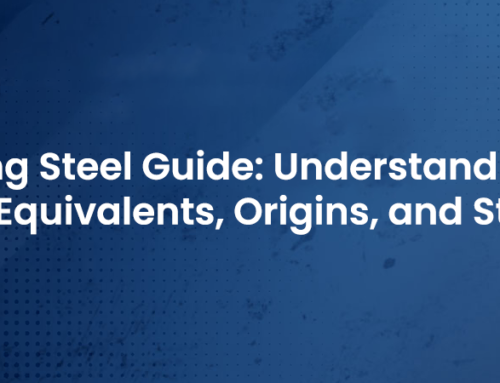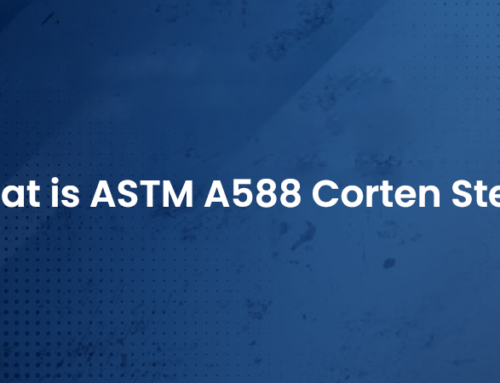SAE – AISI 1020 (UNS G10200) Carbon Steel – Composition, Properties and Uses

SAE/AISI 1020 is a low-carbon steel known for its valuable properties, making it widely used across various industries. Understanding its composition, chemical, mechanical, and physical properties is crucial for maximizing its potential.
SAE/AISI 1020 contains primarily iron, carbon, and manganese, with trace amounts of other elements. Its chemical composition contributes to its strength, flexibility, and weldability.
AISI 1020 steel grade offers a good balance of strength and toughness, making it suitable for structural applications. It exhibits excellent machinability and weldability, allowing for easy fabrication.
SAE/AISI 1020 has a density of approximately 7.87 g/cm³ and a melting point of around 1427-1535°C. Its physical properties contribute to its suitability for various manufacturing processes.
SAE/AISI 1020 finds applications in automotive, construction, machinery, and manufacturing industries. It is used for components requiring strength, flexibility, and ease of fabrication.
Let’s explore what makes SAE/AISI 1020 stand out in the world of steel grades.
AISI 1020 Composition
| Element | Content |
|---|---|
| Carbon, C | 0.17 – 0.230 % |
| Iron, Fe | 99.08 – 99.53 % |
| Manganese, Mn | 0.30 – 0.60 % |
| Phosphorous, P | ≤ 0.040 % |
| Sulfur, S | ≤ 0.050 % |
AISI 1020 Chemical Composition
SAE/AISI 1020 exhibits excellent weldability and machinability owing to its relatively low carbon content compared to similar materials. This characteristic allows it to be cut or shaped easily without compromising its strength or toughness. Additionally, these properties contribute to its high resistance to corrosion across various environments.
AISI 1020 Mechanical Properties
SAE/AISI 1020 Carbon Steel demonstrates impressive mechanical properties despite its low carbon content. It typically has a tensile strength ranging from 415-500MPa, a yield strength of approximately 345MPa, and an elongation rate of 22%. The material also maintains an impact energy value of around 28J at room temperature and -40°C, making it suitable for cold weather applications. Moreover, its good fatigue resistance enables it to withstand repetitive loading conditions over time without premature failure, expanding its usability in various applications.
| Mechanical Properties | Metric | Imperial |
|---|---|---|
| Hardness, Brinell | 111 | 111 |
| Hardness, Knoop (Converted from Brinell hardness) | 129 | 129 |
| Hardness, Rockwell B(Converted from Brinell hardness) | 64 | 64 |
| Hardness, Vickers (Converted from Brinell hardness) | 115 | 115 |
| Tensile Strength, Ultimate | 394.72 MPa | 57249 psi |
| Tensile Strength, Yield | 294.74 MPa | 42748 psi |
| Elongation at Break (in 50 mm) | 36.5 % | 36.5 % |
| Reduction of Area | 66.0 % | 66.0 % |
| Modulus of Elasticity (Typical for steel) | 200 GPa | 29000 ksi |
| Bulk Modulus (Typical for steel) | 140 GPa | 20300 ksi |
| Poissons Ratio | 0.290 | 0.290 |
| Charpy Impact | ||
| @Temperature -30.0 °C/-22.0 °F | 16.9 J | 12.5 ft-lb |
| @Temperature -18.0 °C/-0.400 °F | 18.0 J | 13.3 ft-lb |
| @Temperature -3.00 °C/26.6 °F | 20.0 J | 14.8 ft-lb |
| @Temperature 10.0 °C/50.0 °F | 24.0 J | 17.7 ft-lb |
| @Temperature 38.0 °C/100 °F | 41.0 J | 30.2 ft-lb |
| @Temperature 65.0 °C/149 °F | 54.0 J | 39.8 ft-lb |
| @Temperature 95.0 °C/203 °F | 61.0 J | 45.0 ft-lb |
| @Temperature 150 °C/302 °F | 68.0 J | 50.2 ft-lb |
| Izod Impact | 125 J | 92.2 ft-lb |
| Shear Modulus (Typical for steel) | 80.0 GPa | 11600 ksi |
AISI 1020 Equivalents
| AISI SAE ASTM 1020 steel equivalent material | |||||||||||
|---|---|---|---|---|---|---|---|---|---|---|---|
| US | Germany | China | Japan | ISO | |||||||
| Standard | AISI (UNS) | Standard | Grade | Standard | Grade (Material Number) | Standard | Grade | Standard | Grade | Standard | Grade |
| AISI SAE; ASTM A29/A29M | 1020 (G10200) | AMS | 5032D; 5045E; 5046 | DIN EN 10083-2; DIN EN 10250-2 | C22E (1.1151); C22 (1.0402) | GB/T 699 | 20 steel | JIS G4051 | S20C | ||
SAE/AISI 1020 Heat Treatment
SAE/AISI 1020 can undergo heat treatment to enhance its properties. This involves heating the material to temperatures between 815-845°C and then slowly cooling it over a period of hours or days. This process increases the material’s hardness and wear resistance while preserving its flexibility and toughness. It is suitable for applications requiring strong yet flexible parts that can withstand stress and pressure without easily breaking.
AISI 1020 Physical Properties
AISI/SAE 1020 possesses unique physical properties that render it suitable for a wide range of industrial applications. Its excellent toughness facilitates easy machining, while its flexibility and moderate strength requirement make it conducive to forming processes. Moreover, its relatively low cost compared to other steel grades makes it appealing for large-scale use. With a tensile strength ranging from 365 to 485 MPa, AISI/SAE 1020 demonstrates good overall mechanical properties. Proper heat treatment is essential to maximize its potential, as with all SAE/AISI steels. These distinctive physical characteristics collectively contribute to making AISI/SAE 1020 an exceptionally versatile steel grade suitable for diverse purposes.
| Physical Properties | Metric | Imperial |
|---|---|---|
| Density | 7.87 g/cc | 0.284 lb/in³ |
AISI 1020 Applications & Uses
AISI 1020 Corrosion Resistance
SAE/AISI 1020 is a low-carbon steel known for its excellent corrosion resistance, making it suitable for various applications. With a tensile strength of approximately 315 MPa, structures built with this material are both durable and stable. Its resistance to rust and corrosion is particularly advantageous in high-moisture environments like coastal areas. Unlike some steel alloys, SAE/AISI 1020 can withstand corrosion without additional protective coatings, making it favored in industries dealing with chemicals or materials prone to contamination, such as petrochemical plants and oil refineries.
SAE 1020 Heat Resistance
SAE/AISI 1020 carbon steel boasts exceptional heat resistance properties, making it a highly reliable material for applications requiring exposure to high temperatures. Its robustness and resistance to deformation, warping, and cracking under heat make it versatile for various industries. This heat resistance makes SAE/AISI 1020 steel valuable for producing components in heavy machinery, sealing tools, pipes, structural frames, and more, where maintaining structural integrity in high-temperature environments is crucial.
SAE 1020 Heat Treatment
SAE/AISI 1020 steel’s heat treatment process is relatively straightforward compared to other steels. It typically involves quenching and self-tempering cycles without the need for complex heating sequences. Common methods for achieving desired properties include solution annealing, normalizing, and tempering. Solution annealing transforms the steel into an austenitic microstructure by heating it above its critical temperature and slowly cooling it. Normalizing further relieves stresses from cold working before tempering enhances the hardness of the component. Understanding how heat treatment affects SAE/AISI 1020 steel is crucial for optimizing its properties in various applications.
SAE 1020 Machining
Machining SAE/AISI 1020 carbon steel is both economical and efficient due to its relatively low hardness and tensile strength. This characteristic makes it easy to cut using traditional machining methods like milling and drilling. Additionally, its low carbon content enables it to accept post-machining treatments such as heat treatment effectively. The quick machining process with minimal downtime for setup and tool changeover makes SAE/AISI 1020 steel a cost-effective choice for various production applications.
SAE 1020 Welding
Welding SAE/AISI 1020 steel is a standard procedure for many mechanical components and structures due to its good machinability and formability, resulting in secure and rigid welded joints. The welding process itself is straightforward, requiring minimal effort and energy to create joints. Compared to lower-grade steels, SAE/AISI 1020 offers improved strength at a lower cost than higher-grade steels with similar strength levels. Welded joints made with this alloy exhibit good resistance to extreme temperatures and can withstand rough environments without corrosion or cracking issues, thanks to its relatively good corrosion resistance. These factors make SAE/AISI 1020 welding a popular choice in today’s fabrication industry.
Conclusion
SAE/AISI 1020 stands out as an incredibly versatile material suitable for numerous industries, thanks to its favorable chemical properties and mechanical attributes. It offers a balance of strength, ductility, and toughness, along with excellent weldability and machinability. Additionally, it exhibits good corrosion resistance in specific environments. The ability to adjust its hardness through various treatments makes it customizable for specific needs without compromising performance. These qualities make SAE/AISI 1020 a reliable choice for applications where durability is essential. Despite being one of the oldest materials, its enduring popularity speaks volumes about its reliability and utility across diverse sectors.







Leave A Comment